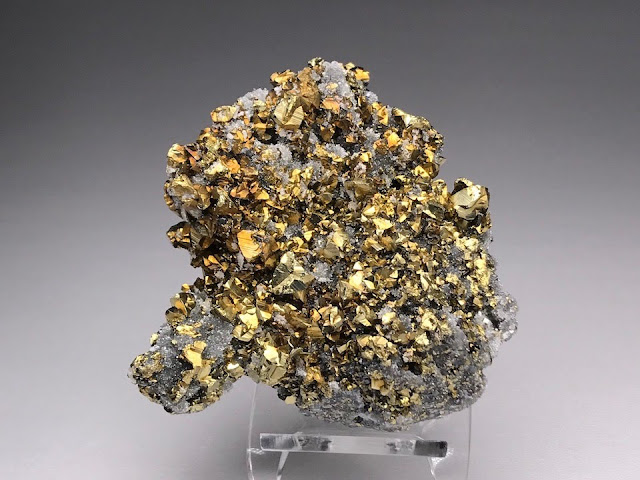松峰の黄銅鉱 Chalcopyrite from Matsumine

秋田県大館市 松峰鉱山 Matsumine Mine, Odate City, Akita, Japan 幅 width 70 mm / 重さ weight 177 g 細かい水晶とともに、光輝を放つ黄銅鉱の結晶が、標本のほぼ全面に着生する。結晶サイズは最大で 7 mm ほど。耳つき双晶がめだつ。立方体の小さな黄鉄鉱もみられる。 松峰鉱山の標本も、 これで4個目の紹介 になるが、いずれもきれいな結晶である。松峰鉱山の鉱体は、地下深くに眠っているので、天水の影響をうけず、鉱物の保存が良いのだろう。逆に二次鉱物のバラエティーは不足しているので、人によってはつまらない産地なのかもしれない。 Shiny golden chalcopyrite crystallizes over a piece of host rock with fine crystals of quartz. The largest chalcopyrite is about 7 mm in size. Some of them form twins with "ears". There is also some small cubic pyrite. This is the fourth specimen from Matsumine mine in this blog . Everyone has fine beautiful crystals. As the Kuroko deposits of Matsumine mine underlie the Hokuroku basin, crystals have been well preserved without alternation due to water. Conversely, this is a less attractive locality for some people because of lack of secondary minerals.


